
Due to the nature of social media and online discussion groups, there is a veritable “mother load” vein of information to be mined regarding best practices and proper maintenance for your supercharged Sea-Doo. The hypersensitivity of the current 300 ACE engines requires owners to truly be cognizant of their engine’s health and operation; too much oil in the crankcase; poor fuel quality; and even failure to properly break-in their engine can lead to premature wear and even failure.
Engine break-in is one of those topics which raises the ire of those particularly brand-loyal to Sea-Doo. These engines do not undergo the same degree of “bench testing” as Yamaha and Kawasaki engines prior to their installation into an assembled watercraft. Both of the aforementioned brands dutifully heat cycle each four-cylinder 4-stroke on a secured engine stand, allowing the powertrain to repeatedly reach peak operating temperature, cycle through a sequence of RPM, and cool down.
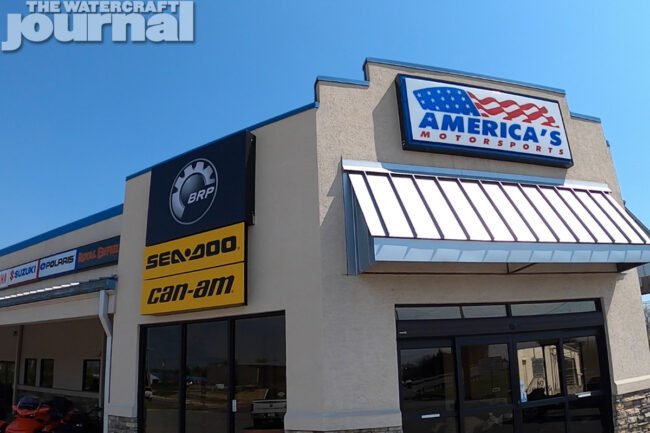
We went to Middle Tennessee’s leading Sea-Doo dealer, America’s Motorsports in Madison to prepare our brand-new 2021 RXP-X 300.
Rather, inside of the Rotax factory in Gunskirchen, Austria, each engine is checked for basic operation, proper oil and fuel pressure, as well as inspected for leaks prior to being shipped out for final assembly in Juarez, Mexico. This means that the ACE’s electroplated cylinder walls, piston rings and pins, main bearings and valvetrain require hours of heat cycling to properly seat into their machined surfaces – all of which, must be performed by the new owner/operator, meaning you.
Previously-published technical guides note that the engine’s timing is retarded 6-degrees as fuel flow is increased 5-percent more over the final “broken-in” operating tune during the first 2 hours of operation. This is done specifically to protect the engine, as fuel-rich (or “fat”) detonation makes for a cooler combustion cycle, effectively easing the 300 ACE into regular operation. During the next 2-to-5 hours, the engine’s ECU will gradually return to normal settings, “leaning out” the fuel curve and advancing the timing.
After 5-hours of operation, the ECU will fully unlock the throttle, as well as the RPM curve and X-module operations (if so equipped). The Owner’s Manual dictates that the proper break-in period last 10-hours of operation, yet the ECU will allow the watercraft to operate unrestrained at 5-hours. [Again, this process only applies to supercharged engines. Naturally-aspirated Sea-Doos (130 and 170-horsepower variants) do not require this break-in period, and will not come constrained. –Ed.]
Throughout this 5-hour period, Sea-Doo requires that operators regularly alternate the throttle every 30-to-45 seconds for these few hours. This throttle variation is not handled by the ECU, you must vary the RPM manually. Thankfully, users are encouraged to employ the whole range of throttle, from idling through No Wake Zones to pinning the throttle wide-open – just not for too long at a time; again, for around 30-seconds or so.
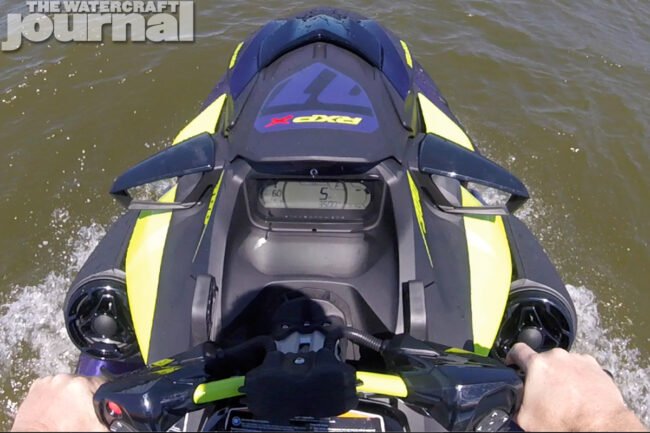
The minimum fuel requirement for your 300 ACE engine is 91-octane. It’s important to note that while the engine’s knock sensor will digitally retard ignition timing depending if lower quality fuel is detected, Premium-grade is what is required for optimal operation. If your lake or available fuel docks do not carry a higher-octane fuel, you may want to consider bringing a can or two of octane booster. They are relatively cheap and regularly stocked at any retail automotive parts store.
Prior to beginning our break-in process, we added a can of Lucas Oil Engine Treatment to our 93-octane fill-up, as it is specifically formulated to treat and lubricate sensitive wear surfaces. This isn’t mandatory, but we wanted to provide a little extra protection considering that this engine has not been operated for any significant length of time.

Equally, it’s important to note that the break-in period is as much for the rider to acquaint themselves with their new watercraft as it is for the engine to properly seat its machined surfaces. A supercharged Sea-Doo is a pretty powerful toy, and in the hands of a neophyte can possibly become a dangerous one. It’s best that those first-time riders build up a little seat-time with a limited throttle before being let loose into the wild.
To many, this may sound tedious, but it’s pretty easy to accomplish in a single day if you’ve got the time and fuel to spend. It’s only important to remember to continually alternate your speed by 10-to-15mph at a time. To do this, we recommend mapping out a route with plenty of twists and turns, with a few straight stretches sprinkled in-between so you can regularly cycle through the throttle positions all while having a lot of fun.
For our brand-new 2021 Sea-Doo RXP-X 300, we ventured up the winding northern route of the Cumberland River, taking us as far as we dared with as much fuel as we could carry. It was with near perfect planning that we watched the hour-clock roll over to exactly 5-hours as we returned to our launch ramp.
With that, we came home, checked our oil for signs of discoloring, metal or carbon scorching, as well as smelled it for signs of unspent fuel mixing in – all tell-tale signs of early failure. Thankfully, not showing any hint of wear, we washed it down and flushed the exhaust before putting it up until our next adventure.










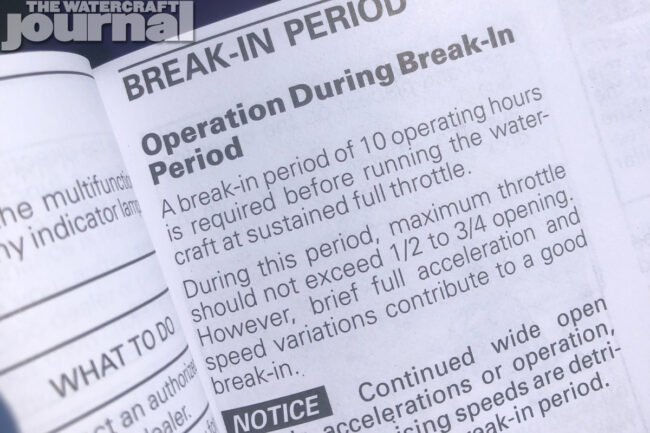
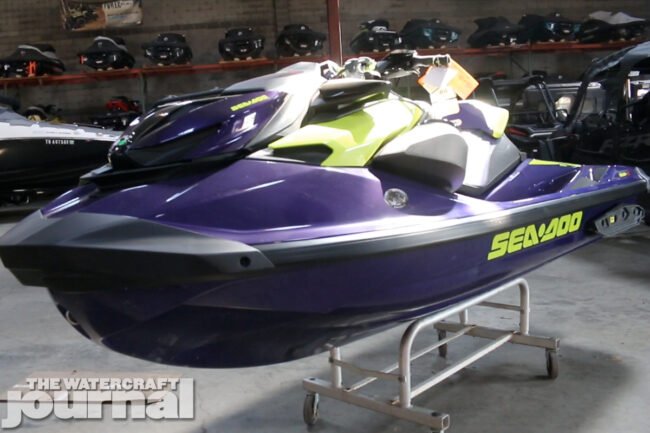
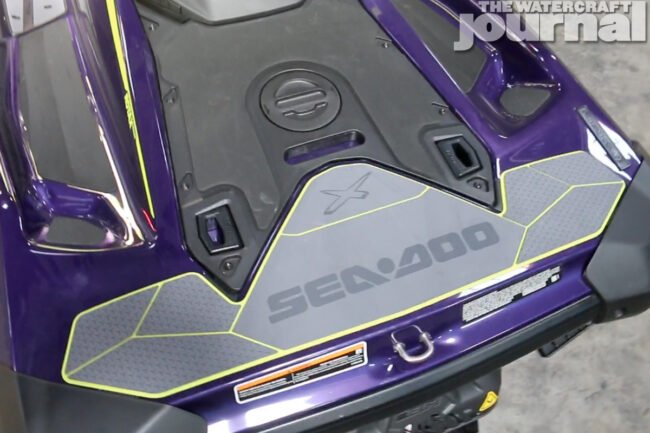

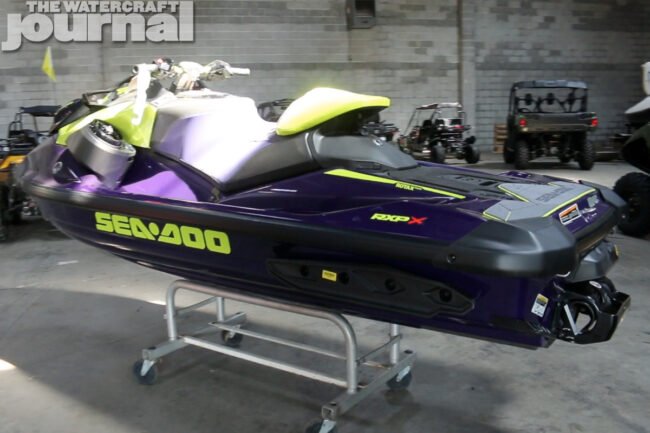
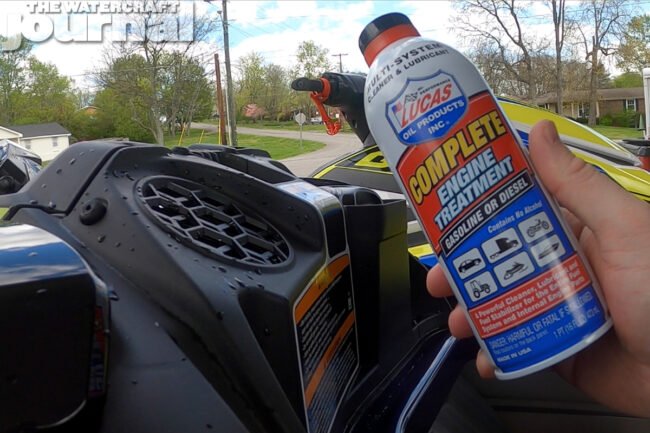

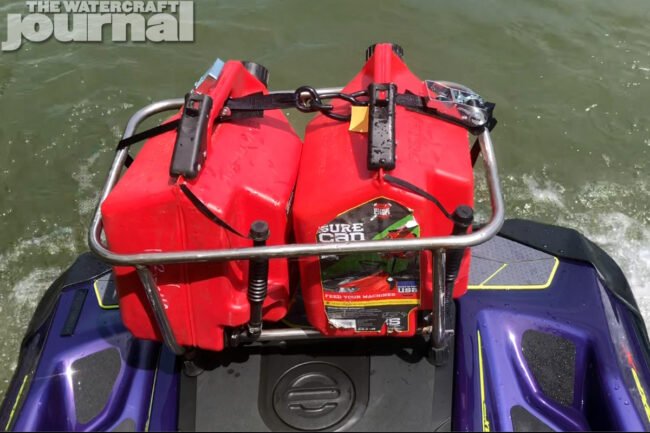



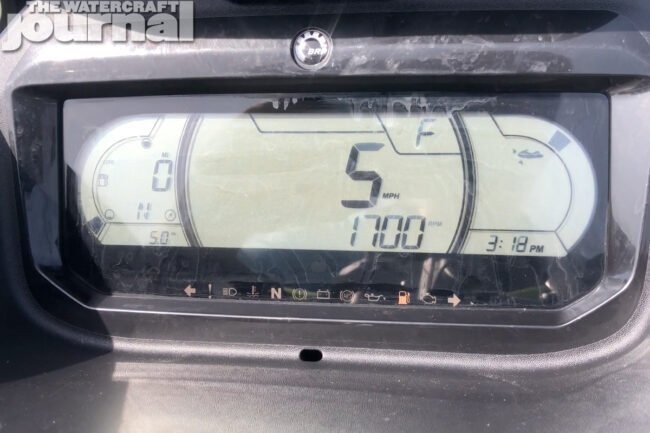
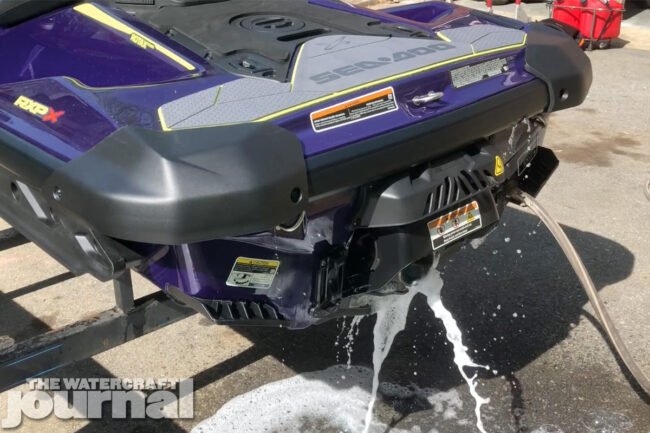
























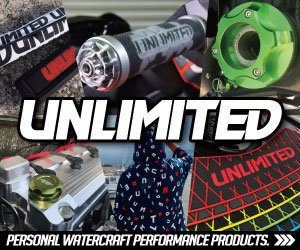


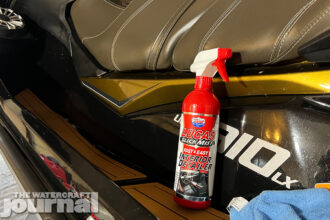

One top Sea-Doo racer and dealer strongly suggested for me NOT to use any oil supplement during break-in. He’s sold and raced Sea-Doos his entire career. If you must, then Just add a good “zinc” additive to get a firm 1500-1800 ppm of “zinc” (zinc dialkyl dithiophosphate) into your oil.
However, the factory fill from Sea-Doo is (as would be expected) is plenty sufficient during break-in. Personally, I would never use any Lucas product. Besides the fact that founder Forest Lucas promotes animal abuse, especially when $$$ is involved, as in horse slaughter/ consumption and puppy mills etc., for anything Lucas makes, there’s a better product equivalent out there. As a Chemical Engineer, I do have knowledgeable experience in such matters.
Agree %100 Chris. To each his own but brp has done all the testing required or rather ROTAX so i will follow their recommendations on break in and oil used in my craft.
Nobody is advocating oil supplements. Of course, given the 300 ACE’s horrendous blow-by, any fuel and/or fuel additive will likely find its way into the crankcase regardless.
This is true, Kevin. No oil supplements recommended or suggested here, but people should always know what’s in any liquid they’re pouring into their engine. This includes “engine treatments” (shown here) of any kind. I have valid reasons not to trust many, if not most, Lucas products, irrespective of their founder’s verifiable track record on animal abuse issues.
BTW, I would never use an “octane booster” in those small cans. Most are grossly overpriced snake oils that provide minimal anti-detonation properties. Just pour in some race fuel instead. There are many that are unleaded, if that’s what you’d prefer. I personally use 100 octane low-lead av-gas because I know friendly airport personnel. Otherwise, try Renegade race fuels. They offer many different blends. A little “blue” 112 Renegade goes a long way when mixed with pump gas.
Hi Kevin, I have a 2021 GTI SE 170, you mention in this article that “Naturally-aspirated Sea-Doos (130 and 170-horsepower variants) do not require this break-in period.”
Do you mean that I dont need to break it in at all? Thanks.
Exactly what I said.